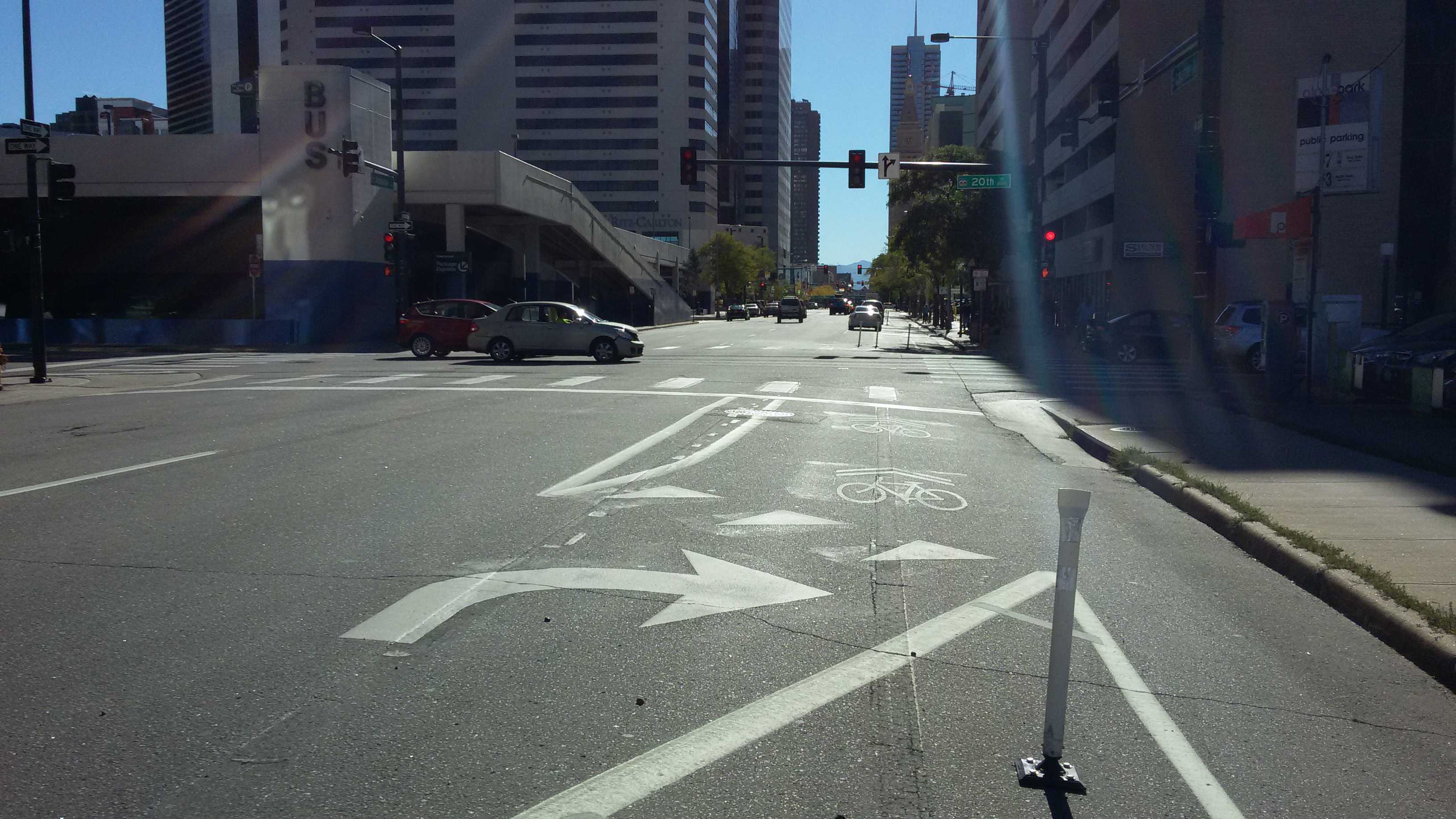In Denver, it's not the hills that get you, it's the altitude! I was glad someone warned me about the effect of moving around in the "mile high city" so I wasn't too surprised about puffing to get to the top of a hill that Seattlites (yes, that's what they call the folk from Seattle) would scoff at.
Seattle and Vancouver are definitely hard acts to follow. Denver definitely holds its own in terms of sunshine and hospitality - many thanks to Rachael Bronson, senior city planner, who told me a lot about the high-level context in Denver and some fine-details on specific projects, as well as taking the time to show me around some central city cycleways! I was surprised to find they're only just getting into using advanced stop lines, and that most of the facilities I saw don't have them.
Something Denver does really well is establishing one-way separated cycleways on one-way streets, which is something Vancouver identified as preferred (see blog number 3) but often couldn't achieve. There are a lot of mixing lanes at intersections in Denver, with two distinct styles of marking. Although I hung around for a while at a few locations, the only cyclists who arrived never seemed to coincide with cars (I think Oktoberfest had something to do with the unusual traffic patterns on the Friday afternoon). I'll correspond more with my contacts there to verify how well they're actually working, and what the reasons for the two different treatments are.

The only 2-way cycleway in Denver is a demonstration project on the left side of a one-way street, Broadway. Again, they seem to use the "magic threshold" of 150 turning vehicles per hour to determine whether or not to protect turns. They also have a few locations with filter (permissive) turns where, in addition to the give way (yield) sign, there's a flashing yellow beacon. (Yes, Axel, they do that in Germany too).
![]()
So, after another useful stop, I'm moving on with more information (and a few more questions) and getting ready to descend closer to sea-level. Next stop: Chicago!

